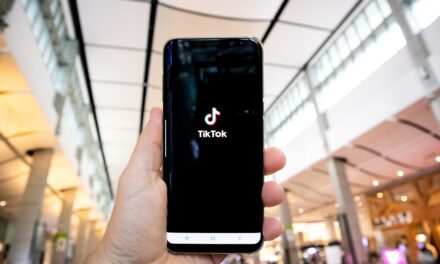Imagine pouring your heart and soul into crafting social media content, but your posts vanish into the digital abyss. That’s the frustration many businesses face when they choose the wrong platform. But what if a simple switch could transform your online presence? That’s the social media phoenix effect.
Here are real-life examples of businesses that were utterly failing on one social media channel. But when they switched to the right network for them, they rose from the ashes to find massive success in their businesses.
The Fancy Fork – From Facebook to Instagram
The Fancy Fork, a Michelin-starred restaurant, initially focused their social media efforts on Facebook. They posted updates about their tasting menus, awards, and chef profiles. However, their visually stunning plates and artistic presentations didn’t translate well to Facebook’s text-heavy format.
When The Fancy Fork shifted their focus to Instagram, everything changed. They began posting mouthwatering food photos and videos, showcasing the intricate plating and vibrant colors of their dishes.
They used relevant hashtags to target foodies and luxury lifestyle enthusiasts. Engagement skyrocketed, reservations increased, and The Fancy Fork became an Instagram sensation.
B Sharp Music – From Instagram to YouTube
B Sharp Music, a classical music school offering in-person and online lessons, initially focused on promoting their courses through eye-catching photos and videos on Instagram. While the visuals were beautiful, they struggled to effectively convey the quality of their instruction and the passion of their teachers in a short format.
B Sharp Music found their niche on YouTube. They started creating content showcasing their teachers performing, offering short technique tutorials, and even hosting online masterclasses.
This allowed them to demonstrate their expertise and connect with potential students on a deeper level. YouTube’s search functionality also helped people looking for specific instruments or music styles discover B Sharp Music.
Pawsome Pet Supplies – From Twitter to Pinterest
Pawsome Pet Supplies, a boutique offering unique pet accessories and apparel, struggled to gain traction on Twitter. Their witty pet-related tweets and adorable product photos often got lost in the fast-paced stream of information.
When Pawsome Pet Supplies turned to Pinterest, they found their perfect platform. They created visually appealing boards showcasing their products on different breeds of pets.
They curated content related to pet care, fashion, and DIY projects, using relevant keywords to attract pet owners. This strategy not only increased brand awareness but also drove significant traffic to their online store.
Green Thumb Gardeners – From LinkedIn to Facebook Groups
Green Thumb Gardeners, a retailer specializing in high-end gardening supplies, initially tried to connect with professional landscapers on LinkedIn. However, their target audience was primarily passionate home gardeners, not professional contractors.
Green Thumb Gardeners discovered Facebook Groups. They joined and actively participated in gardening communities, offering helpful tips, answering questions, and showcasing their products.
This allowed them to connect with potential customers directly, build trust, and establish themselves as a valuable resource for home gardening enthusiasts.
The Bookworm Nook – From Pinterest to TikTok
The Bookworm Nook, a charming independent bookstore, initially relied on Pinterest to showcase their curated book selections and cozy store atmosphere. However, Pinterest’s user base skews heavily female and may not have fully captured the diverse audience The Bookworm Nook was trying to reach.
The Bookworm Nook discovered the power of TikTok. They started creating short, engaging videos featuring staff recommendations, author interviews, and behind-the-scenes glimpses of the bookstore.
Their lighthearted and humorous approach resonated with a younger audience and helped attract new customers who might not have otherwise considered visiting an independent bookstore. They even used TikTok trends to promote specific books or genres, creating a viral buzz around their store.
Suit Up – From Facebook to LinkedIn
Suit Up, a retailer specializing in high-end men’s formal wear, initially focused their social media efforts on Facebook. They posted photos of stylish suits, promotions, and new arrivals. However, Facebook’s user base tends to be more casual and may not be actively searching for formal wear. Their content got lost in the general noise of the platform.
Suit Up found success when they shifted their focus to LinkedIn. They began creating content targeted towards professionals, like guides on how to dress for different business occasions or workplace style tips.
They also started sponsoring industry events and connecting with recruiters and career advisors, building brand awareness among their ideal customer base. LinkedIn’s focus on professional networking proved to be a much better fit for Suit Up’s target audience.
Yo-Yo Yoga – From Twitter to Instagram
Yo-Yo Yoga, a boutique yoga studio offering a variety of classes, initially used Twitter to promote their schedule and special offers. However, the fast-paced nature of Twitter limited their ability to showcase the calming and restorative aspects of their practice. Additionally, their target audience might not be actively searching for yoga classes on Twitter.
Yo-Yo Yoga thrived on Instagram. They started posting beautiful photos and videos of their studio space, instructors performing different poses, and students enjoying their classes. They used relevant hashtags to connect with yoga enthusiasts and offered inspirational quotes or short yoga tutorials in their captions. The visually appealing nature of Instagram perfectly complemented Yo-Yo Yoga’s brand and helped them attract new students.
Hammer & Nails – From Pinterest to YouTube
Hammer & Nails, a hardware store specializing in home improvement supplies, initially relied on Pinterest to showcase their products and inspire DIY projects. However, Pinterest’s user base leans towards browsing and saving ideas, not necessarily making immediate purchases. While they gained brand awareness, translating that into sales proved challenging.
Hammer & Nails found their voice on YouTube. They started creating instructional videos on various DIY projects, like fixing a leaky faucet or installing new shelves. These videos not only showcased their products in action but also positioned them as a helpful resource for homeowners.
Additionally, YouTube’s search functionality allowed users looking for specific DIY solutions to discover Hammer & Nails content. This strategy not only increased brand awareness but also drove customers directly to their store or website to purchase the necessary supplies.
What change could YOU make?














